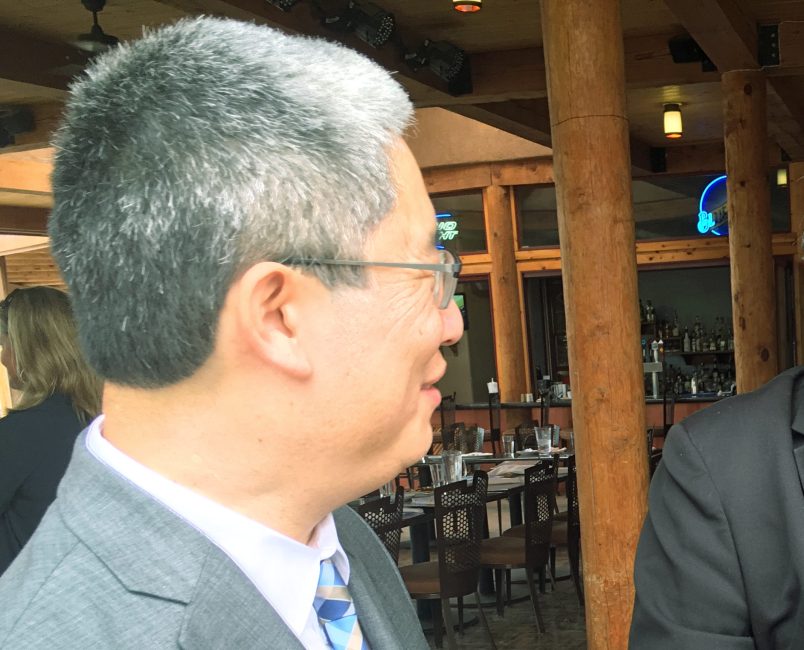ALBUQUERQUE, N.M. (AP) — American Indian tribal leaders from northern New Mexico — an area of the country devastated by heroin and opioid addiction — met with the U.S. Justice Department over ways to combat opioid abuse amid high overdose deaths among Native Americans.
And both sides say much more needs to be done.
Associate Deputy Attorney General Bruce Ohris spoke with representatives and police chiefs from the eight northern New Mexico Native American pueblos Tuesday as part of a push to combat heroin-related deaths across the state, including Indian Country. They discussed ways for better treatment, the need for more law enforcement resources and the desire for an educational blitz targeting American Indian children as young as 8.
“Here in New Mexico we are facing an epidemic,” U.S. Attorney Damon Martinez said. “One of the (pueblo) governors brought pictures of these hypodermic needles they are picking up on a daily basis.”
New Mexico’s drug overdose death rate was the second highest in the nation in 2014, according to the latest available numbers.
For years, the northern New Mexico city of Espanola and northern Rio Arriba County have had some of the nation’s highest heroin-related death rates. The crisis has overwhelmed cash-strapped law enforcement agencies and emergency workers who often struggle to combat Mexican traffickers who provide users lethal “black tar” heroin via a sophisticated system that resembles pizza delivery.
“It’s a wildfire that’s taking off,” Pueblo of Pojoaque Gov. Joseph Talachy said. “It started off small, but then it took off.”
But now the users have gone underground, and the pueblo struggles to bring non-American Indians to justice because of jurisdiction, Talachy said.
According to the new numbers released Tuesday by the New Mexico Department of Health, Rio Arriba County had the highest drug overdose death rate in the state with 81.4 deaths per 100,000 residents last year.
“The fact is, our state continues to suffer from drug abuse. One overdose death is one too many,” New Mexico Health Secretary Designate Lynn Gallagher said.
But health officials say heroin and opioid addiction especially has hit American Indian communities across the country as the number of overdose deaths from prescription painkillers has soared overall, claiming the lives of 165,000 people in the U.S. since 2000.
A National Institute on Drug Abuse survey found that American Indian students’ annual heroin and OxyContin use was about two to three times higher than the national averages from 2009 to 2012.
Heroin and opioid abuse have even stuck in the most remote parts of the country among American Indians.
In Alaska’s Yukon-Kuskokwim Delta region, for example, state health officials say the isolated area of Alaska Native villages and 25,000 residents has around 500 people addicted to opioids. Most of these Alaska villages don’t have treatment centers for drug users.
Earlier this month, tribal officials in the southwestern Alaska village of Quinhagak banished six people over illegal drugs and alcohol. The move came after the village of 700 residents saw four apparent heroin overdoses in one day.
Meanwhile, a nonprofit prescription drug abuse prevention program in Maine is helping make available the drug Narcan to the state’s five Native American tribes. Narcan, whose generic name is naloxone, is a prescription drug that reverses the effects of an opioid overdose. The program set up five clinics on tribal land thanks to a federal grant.
The Justice Department meeting in Albuquerque is part of the New Mexico Heroin and Opioid Prevention and Education Initiative.
___
Follow Russell Contreras on Twitter at http://twitter.com/russcontreras . His work can be found at http://bigstory.ap.org/content/russell-contreras .
Copyright 2016 The Associated Press. All rights reserved. This material may not be published, broadcast, rewritten or redistributed.



